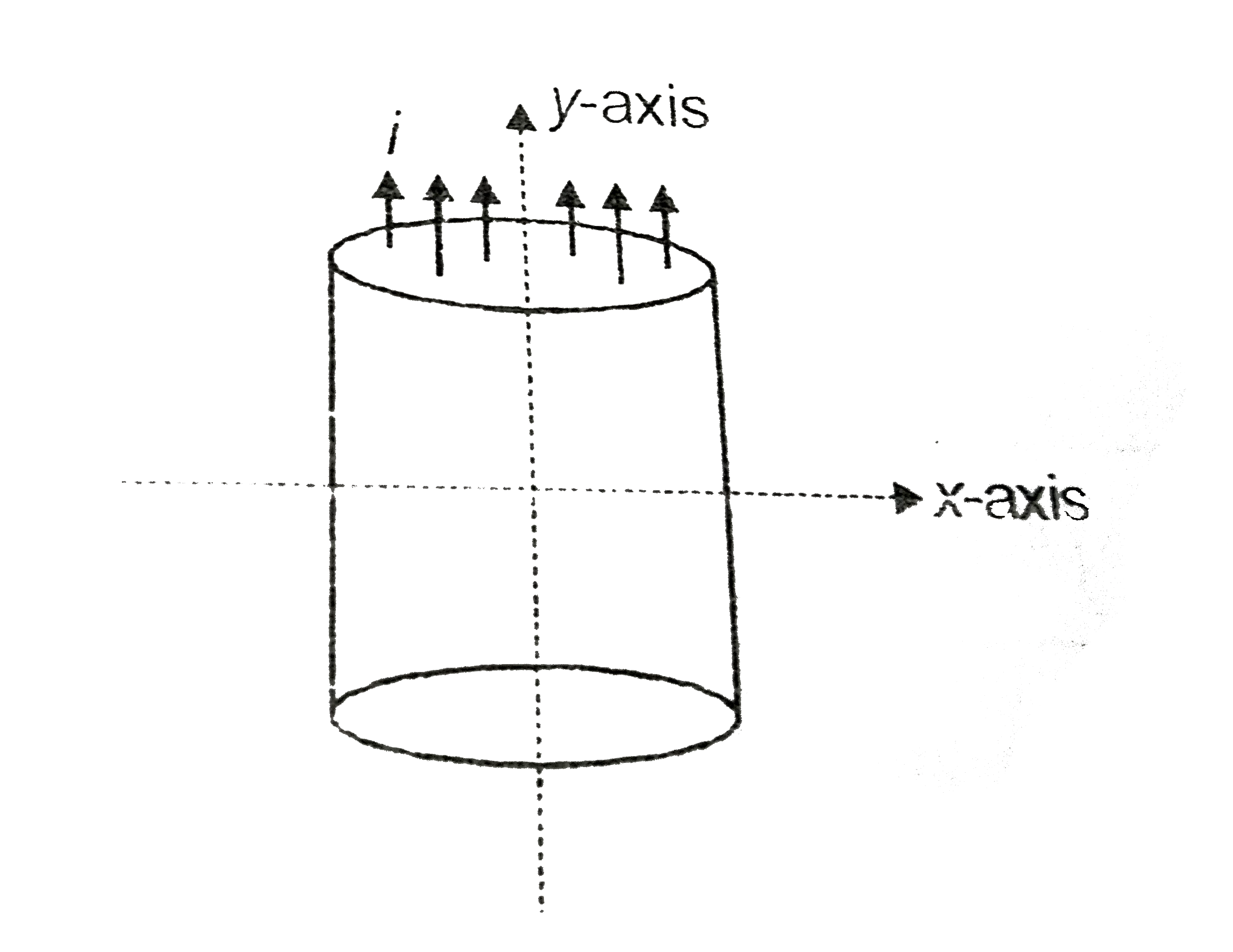(A) : Ampere's law holds for steady currents in straight conductor which do not vary with time.
(R) : Magnetic field lines always form closed loops.
Both 'A' and 'R' are true and 'R' is the correct explanation of 'A'.
Both 'A' and 'R' are true and 'R' is not the correct explanation of 'A'
'A' is true and 'R' is false
'A' is false and 'R' is false
The correct Answer is:B
To solve the problem, we need to analyze the two statements given:
Statement (A): Ampere's law holds for steady currents in straight conductors which do not vary with time.
Statement (R): Magnetic field lines always form closed loops.
1. Understanding Ampere's Law:
- Ampere's law states that the line integral of the magnetic field B around a closed loop is proportional to the electric current I passing through the loop. Mathematically, it is expressed as:
∮B⋅dl=μ0I
- This law is valid for steady currents, meaning the current does not change with time.
2. Analyzing Statement (A):
- The statement correctly asserts that Ampere's law applies to steady currents in straight conductors. When current is constant (not varying with time), we can use Ampere's law to find the magnetic field around the conductor.
3. Understanding Magnetic Field Lines:
- Magnetic field lines represent the direction and strength of the magnetic field. They always form closed loops, meaning they do not begin or end but rather loop back on themselves.
- This is a fundamental property of magnetic fields, as they emerge from the north pole of a magnet and enter at the south pole.
4. Analyzing Statement (R):
- The statement is also true; magnetic field lines indeed always form closed loops. However, this property of magnetic field lines does not directly explain why Ampere's law is valid for steady currents.
5. Conclusion:
- Both statements (A) and (R) are true. However, the reason (R) does not provide a correct explanation for the assertion (A). The validity of Ampere's law for steady currents is based on the constancy of the current, not on the nature of magnetic field lines.
Final Answer:
Both assertion and reason are true, but the reason is not the correct explanation of the assertion.
- Ampere's law states that the line integral of the magnetic field B around a closed loop is proportional to the electric current I passing through the loop. Mathematically, it is expressed as:
∮B⋅dl=μ0I
- This law is valid for steady currents, meaning the current does not change with time.
- The statement correctly asserts that Ampere's law applies to steady currents in straight conductors. When current is constant (not varying with time), we can use Ampere's law to find the magnetic field around the conductor.
- Magnetic field lines represent the direction and strength of the magnetic field. They always form closed loops, meaning they do not begin or end but rather loop back on themselves.
- This is a fundamental property of magnetic fields, as they emerge from the north pole of a magnet and enter at the south pole.
- The statement is also true; magnetic field lines indeed always form closed loops. However, this property of magnetic field lines does not directly explain why Ampere's law is valid for steady currents.
- Both statements (A) and (R) are true. However, the reason (R) does not provide a correct explanation for the assertion (A). The validity of Ampere's law for steady currents is based on the constancy of the current, not on the nature of magnetic field lines.
Both assertion and reason are true, but the reason is not the correct explanation of the assertion.
Topper's Solved these Questions
- MOVING CHARGES AND MAGNETISMBOOK - AAKASH SERIESCHAPTER - MOVING CHARGES AND MAGNETISMEXERCISE - EXERCISE-II
79 Videos
- MOVING CHARGES AND MAGNETISMBOOK - AAKASH SERIESCHAPTER - MOVING CHARGES AND MAGNETISMEXERCISE - EXERCISE-III
49 Videos
- MOVING CHARGES AND MAGNETISMBOOK - AAKASH SERIESCHAPTER - MOVING CHARGES AND MAGNETISMEXERCISE - EXERCISE-IA
142 Videos
- MOTION IN A STRAIGHT LINE BOOK - AAKASH SERIESCHAPTER - MOTION IN A STRAIGHT LINE EXERCISE - very Short answer type question
15 Videos
- NUCLEAR PHYSICSBOOK - AAKASH SERIESCHAPTER - NUCLEAR PHYSICSEXERCISE - ADDITIONAL PRACTICE PRACTICE SHEET (ADVANCED) Integer Type Questions
3 Videos
Similar Questions
Knowledge Check
Statement-1 The net magnetic flux through a spherical surface enclosing north pole of a bar magnet as zero

Statement-2 Magnetic field lines always form closed loopsAIf both assertion and reason are true and reason is the correct explanation of assertion.BIf both assertion and reason are true but reason is the correct explanation of assertion.CIf assertion is true but reason is falseDIf both assertion and reason are false.Statement-1 The net magnetic flux through a spherical surface enclosing north pole of a bar magnet as zero

Statement-2 Magnetic field lines always form closed loopsAIf both assertion and reason are true and reason is the correct explanation of assertion.BIf both assertion and reason are true but reason is the correct explanation of assertion.CIf assertion is true but reason is falseDIf both assertion and reason are false.
Why do the electrostatic field lines not form closed loop?
View SolutionA: When currents vary with time, Newton's third law is valid only if momentum carried by the electromagnetic field is taken into account.
R: Magnetic field lines always form closed loops.
View SolutionStatement-1 The net magnetic flux through a spherical surface enclosing north pole of a bar magnet as zero

Statement-2 Magnetic field lines always form closed loops
View SolutionMagnetic lines of force due to a straight conductor carrying current are
View SolutionThe figure shows a long straight current carrying conductor. Can you plot the variation of magnetic field on x-axis ?

View SolutionSTATEMENT-1 : Magnetic poles are only mathematical assumptions and have no real existence .
and
STATEMENT-2 : Magnetic field lines are always in closed loops .
View Solution
